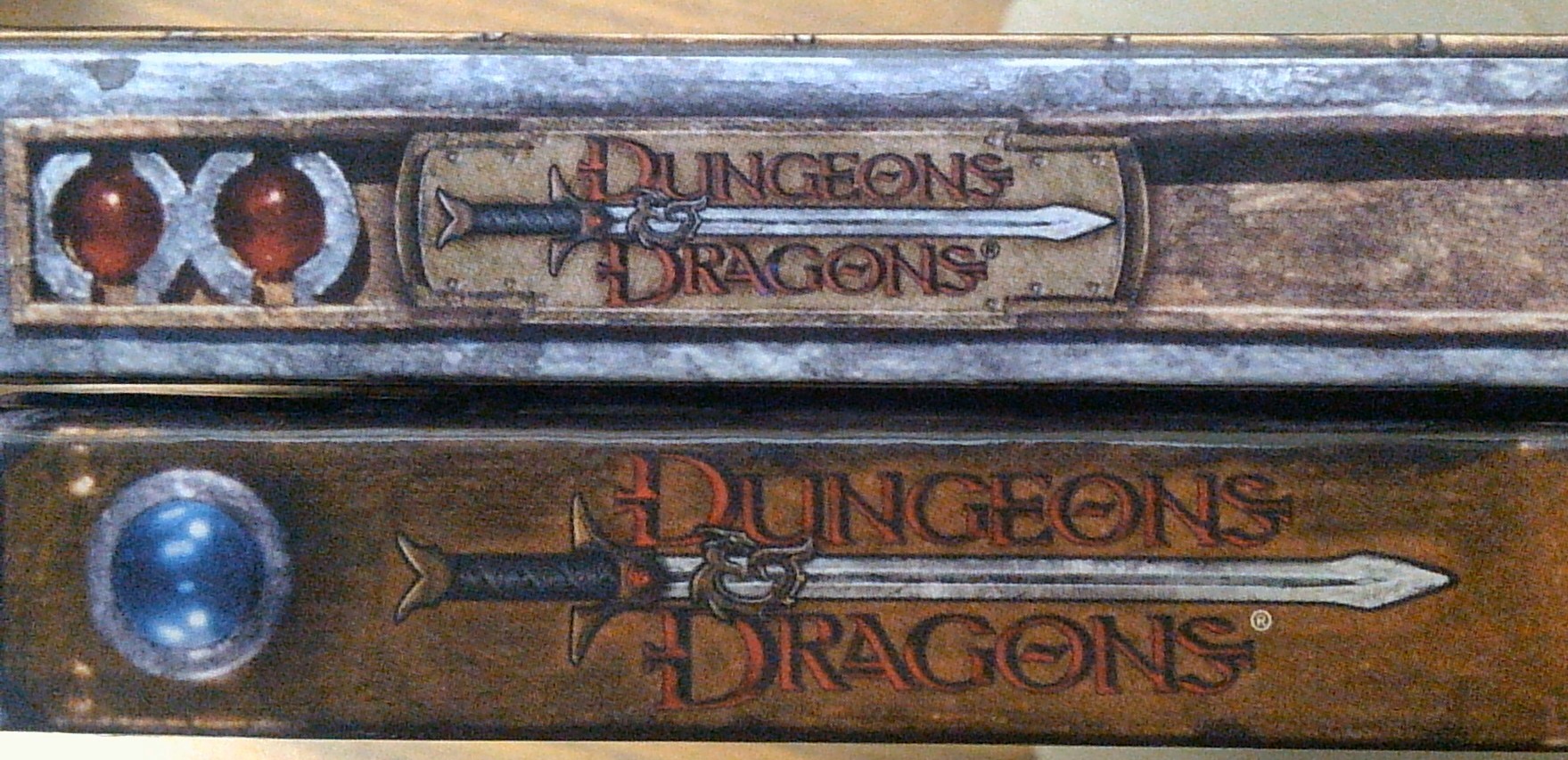A quick, visual guide to the editions, by logo:
[note: there is no effort made here to explain or compare editions: please see Q/A like https://rpg.stackexchange.com/q/13212/23970 or https://rpg.stackexchange.com/q/336/23970 for such discussion.]
The "Dungeons & Dragons" logo has changed pretty distinctively among editions and is pretty-consistently used within an edition, and so provides a good starting point. (Of course there are exceptions, most currently the "special edition" covers for 5e.)
Pictured below are photos of the most common logo or two for each edition, both on the books' spines and front covers.
5e


The "spine" logo also appears on the lower-left part of most covers, and both these logos are in the corresponding places on the Starter Set box.
5e also released a special edition black cover with distinctive artwork. Notably, the stylized dragon ampersand (&) in the logo is the same as the original 5e books. The black covers do not have the spine artwork on the cover. The PHB is red, the MM light blue, and the DMG dark purple.


4e
The font of 4e's logo roughly resembles the 3e/3.5e logo (see below) but without the horizontal sword image in between the two words. It also has a stylized dragon ampersand, again similar to 3e/3.5e/5e, but it does look distinctly different from the other editions (the "dragon's wing" is more prominent than in the other editions' ampersands).


3.5e, 3e
3.0/3.5 used the same logo; the logo varied a bit in execution, but is fundamentally unchanged from book to book. Pictured below are two variations, spines and covers.
Books for 3.5 will say "v3.5" both on the spine and on the cover. The (few) examples I own have the "v3.5" at the bottom of the spine and in the lower part of the cover, well away from the main logo.
Books for 3e just have the logo, no version-marker.



2e
The logo as presented in full-color (corebooks, for example) and foil. Look how nicely it proclaims itself to be 2e!



1e
Two fairly different logos; best I can surmise it's the "when" of the book's design that determines the logo used. (The newer logo establishing the now-iconic ampersand-with-dragon's-breath!) No edition number specified, since there was no need!



Various Basic
![[picture needed: click [edit] if you can help!]](https://i.sstatic.net/KoZEE.jpg)
0e
![[picture needed: click [edit] if you can help!]](https://i.sstatic.net/asWhX.jpg)
















![[picture needed: click [edit] if you can help!]](https://i.sstatic.net/KoZEE.jpg)
![[picture needed: click [edit] if you can help!]](https://i.sstatic.net/asWhX.jpg)